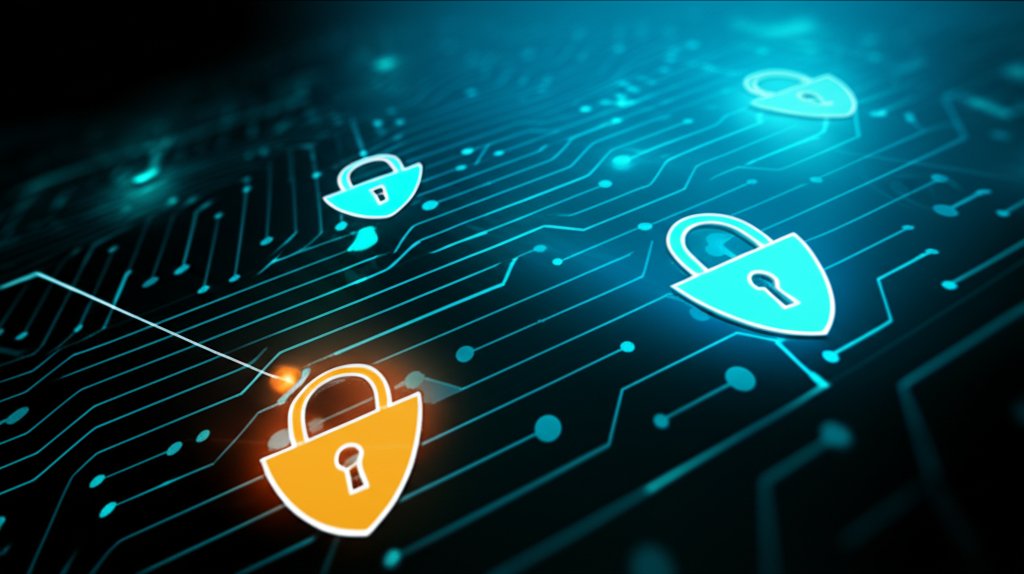Zero Trust vs. Phishing: Your Small Business Shield Against Advanced Attacks
In today’s interconnected world, the specter of cyberattacks isn’t an abstract threat reserved for Fortune 500 companies. It’s a very real, growing concern for small businesses and every internet user. You’re likely familiar with “phishing” — but have you truly grasped just how sophisticated and insidious these attacks have become? They’ve evolved far beyond obvious scams, transforming into precise, personalized, and incredibly dangerous operations. It’s enough to make any business owner or individual worried about their online security, and rightfully so.
As a security professional, my goal is to equip you with the knowledge to confront these evolving threats head-on. I want to introduce you to a powerful defense strategy that’s fundamentally changing the cybersecurity landscape: Zero Trust Architecture (ZTA). While not a single product or a magical cure-all, Zero Trust represents a robust and proactive approach that can significantly bolster your defenses against even the sneakiest, most advanced phishing attempts. Let’s first demystify what modern advanced phishing looks like, then explore the core principles of Zero Trust, and finally, I’ll show you exactly how this innovative framework empowers you to take control of your digital security.
What is “Advanced Phishing” and Why Should Small Businesses Care?
Beyond the Obvious Scam: Understanding Modern Phishing Threats
We’ve all encountered them: the poorly written emails promising millions from a distant relative or demanding we “verify” our bank account through a suspicious, pixelated link. Those are traditional phishing attempts, and while they unfortunately still catch some victims, cybercriminals have significantly elevated their game. Today’s advanced phishing attacks are far more insidious because they are meticulously crafted, highly personalized, often appear incredibly legitimate, and expertly leverage social engineering tactics to manipulate you.
Here are the key types of advanced phishing you must be aware of:
- Spear Phishing: This is no random, “spray-and-pray” attack. Spear phishing meticulously targets specific individuals or organizations, often using information gleaned from social media profiles, company websites, or public records to make the email seem highly credible. The sender might convincingly impersonate a colleague, a client, a trusted vendor, or even a prospective business partner you recognize.
- Whaling: Imagine spear phishing but aimed at the biggest fish in the pond. Whaling attacks specifically target high-level executives — CEOs, CFOs, board members — leveraging their authority within the organization. The typical goal is to trick them into authorizing large financial transactions, releasing sensitive corporate data, or granting access to critical systems.
- Business Email Compromise (BEC): This is arguably one of the most financially devastating types of advanced phishing. In a BEC attack, the cybercriminal sophisticatedly impersonates an executive, a vendor, or another trusted party to trick an employee into performing a fraudulent financial transaction. This could involve wiring money to a fake account, changing direct deposit information for payroll, or purchasing gift cards under false pretenses.
And it’s not just email anymore! We’re increasingly seeing Vishing (voice phishing, like fraudulent phone calls pretending to be IT support or your bank) and Smishing (SMS phishing, using text messages with malicious links or requests) as other sophisticated vectors. These aren’t mere annoyances; they are carefully crafted traps designed to steal your credentials, your money, or your sensitive business data.
Why should small businesses be particularly concerned? Frankly, you are prime targets. Small businesses often operate with fewer dedicated cybersecurity resources, may rely on outdated defenses, and employees might not receive regular, comprehensive security training. The consequences of a successful attack can be catastrophic: significant financial loss, devastating data breaches, crippling regulatory fines, and severe reputational damage that many small businesses struggle to recover from.
What is Zero Trust Architecture (ZTA) in Simple Terms?
“Never Trust, Always Verify”: The Core Philosophy
So, how do we effectively fight back against these constantly evolving threats? Enter Zero Trust Architecture. At its core, Zero Trust is not a specific product you purchase; it’s a fundamental security model, a paradigm shift in how we approach digital defense. It directly challenges the outdated “castle-and-moat” security approach where everything inside the network perimeter was implicitly trusted. That old model mistakenly assumed that once you were “inside” the network, you were safe. But what happens when an attacker breaches that perimeter, perhaps through a deceptive phishing email?
Zero Trust turns that traditional thinking on its head. Its core principle is beautifully simple and profoundly effective: “Never Trust, Always Verify.” This means that absolutely every user, every device, and every network request — regardless of whether it originates from inside or outside your network — must be explicitly verified and authorized before access is granted. It’s like having a dedicated security guard at every single door and window, not just at the front gate. This constant verification significantly reduces the attack surface for phishing attempts, as even if credentials are stolen, subsequent access attempts will face continuous scrutiny. And no, this isn’t just for the “big guys”; small businesses can and absolutely should implement Zero Trust principles, often by integrating with existing tools and cloud services.
The Pillars of Zero Trust: How It Works to Thwart Phishing
To put “Never Trust, Always Verify” into practical application, Zero Trust relies on several key pillars that directly enhance your defense against advanced phishing:
- Verify Explicitly: This principle demands continuous authentication and authorization for everything. It’s not enough to log in once at the start of the day. Zero Trust constantly verifies your identity, assesses the health and compliance of your device, and evaluates the context of your access (where you are, what application you’re trying to use, the sensitivity of the data). Multi-Factor Authentication (MFA) is a primary component here, as is risk-based authentication that dynamically challenges suspicious login attempts. This pillar directly frustrates phishing attempts by ensuring stolen credentials alone are insufficient for access.
- Least Privilege Access: Users are granted only the absolute minimum access required for their specific job functions — nothing more. If an employee’s role only necessitates access to shared spreadsheets, they should not have access to the customer database or financial records. This drastically reduces the potential damage if an account is compromised via a phishing attack, containing the attacker’s reach.
- Assume Breach: Instead of operating on the hopeful assumption that attacks won’t happen, Zero Trust designs systems with the expectation that breaches will occur. The focus then shifts to rapidly detecting, containing, and responding to threats, limiting their spread and impact. This mindset prepares your business for the inevitable success of some phishing attempts, allowing for swift mitigation.
- Micro-segmentation: This involves dividing your networks into small, isolated zones or segments. If one segment is compromised — perhaps due to a successful phishing attack on a workstation in that segment — the attacker cannot easily move laterally to other parts of your network. This effectively contains the threat to a much smaller, less critical area, preventing widespread damage.
- Continuous Monitoring: Zero Trust systems are constantly vigilant. They continuously monitor user behavior, device health, and network traffic for any suspicious activity or deviations from established baseline norms. This allows for rapid detection of potential threats, often before significant damage occurs. When it comes to Zero Trust and security, constant vigilance is not just a best practice, it’s a foundational requirement.
How Zero Trust Directly Defends Against Advanced Phishing Attacks
Now, let’s connect these powerful Zero Trust principles directly to the sophisticated phishing threats we discussed earlier. How does Zero Trust specifically protect your small business from spear phishing, whaling, and Business Email Compromise?
Stopping Credential Theft in Its Tracks
One of the primary goals of advanced phishing, especially spear phishing and whaling, is to steal your login credentials. But with Zero Trust, even if a highly sophisticated phishing attack manages to trick an employee into giving up their password, the attacker hits a significant roadblock:
- MFA as an Impenetrable Barrier: Zero Trust mandates Multi-Factor Authentication (MFA) everywhere possible. This means that even if an attacker has a stolen password from a phishing email, they still need that second factor — a unique code from your phone, a biometric scan, or a hardware key — to gain access. This single measure makes credential theft from phishing attacks far less potent and often renders them useless.
- Continuous Authentication Challenges: ZTA doesn’t just authenticate once at login. If an attacker tries to use stolen credentials to log in from a new, unusual device, an unexpected geographic location, or at an odd time, Zero Trust can dynamically challenge that attempt with additional authentication or block it entirely. This makes it incredibly difficult for an attacker to successfully use phished credentials without triggering immediate alarms and preventing access.
Limiting the Damage of a Successful Phish
What if, despite all precautions, an attacker somehow manages to gain initial access to an account through an exceptionally clever phishing scam? This is where Zero Trust’s “Assume Breach” philosophy and other principles truly shine, significantly mitigating the impact of BEC and whaling attacks:
- No Free Roam with Least Privilege: Thanks to the principle of least privilege access, even a compromised account won’t have widespread access to your entire network or all your sensitive data. The attacker will be confined to the minimal resources that the phished user was authorized for. Imagine them getting into a single storage closet when they were aiming for the main vault — they simply can’t get there, preventing them from immediately reaching critical systems or sensitive customer data. This significantly reduces the potential for a BEC attack to succeed in diverting funds.
- Micro-segmentation Contains the Threat: If an attacker breaches one part of your network by compromising an employee’s workstation via a malicious link in a phishing email, micro-segmentation acts like watertight compartments on a ship. The threat is contained to that small, isolated segment, preventing the attacker from moving laterally across your entire network to find more valuable targets. This drastically reduces the scope and impact of any successful breach, making it harder for whaling attacks to find their targets or for BEC to expand its reach.
- Device Trust Blocks Compromised Devices: Zero Trust continuously checks the “health” and compliance of devices trying to access resources. If an employee’s laptop is compromised by a malicious download or exploit from a phished link, ZTA can detect that the device no longer meets security standards. It can then automatically block its access to critical business applications, further containing the threat and preventing an attacker from using a compromised device to escalate an attack.
Enhanced Visibility and Faster Response
Zero Trust’s emphasis on continuous monitoring and explicit verification means your business gains significantly better visibility into your network and user activity. This is absolutely crucial for rapid response and containment when a phishing attempt inevitably makes it through:
- Granular logging allows security teams — or even a vigilant small business owner — to quickly identify unusual activity, such as a phished account trying to access unauthorized resources or attempting to exfiltrate data.
- Suspicious connections or applications can be isolated immediately, preventing them from causing further harm while you investigate and remediate. When we build security with a Zero Trust mindset, we are empowering our teams to see potential threats and react much faster.
Practical Steps for Small Businesses to Start with Zero Trust
You Don’t Need to Overhaul Everything Overnight
I know what you might be thinking: “This sounds great, but it’s probably too expensive and complicated for my small business.” The good news is that Zero Trust is an iterative journey, not a single product purchase or a massive, immediate overhaul. You can start small, integrate Zero Trust principles with your existing tools, and gradually build up your defenses. It’s fundamentally about shifting your mindset and making strategic, practical improvements that yield tangible security benefits.
Key Actions You Can Take Now to Embrace Zero Trust Principles
You can start implementing Zero Trust principles today to protect your business against advanced phishing:
- Implement Multi-Factor Authentication (MFA) Everywhere Possible: This is your absolute first and most effective line of defense against credential theft from phishing. Enable MFA for all email accounts, business applications, VPNs, and cloud services. Most modern services offer this for free or as a standard feature.
- Review and Enforce “Least Privilege” for All User Accounts: Regularly audit who has access to what data and systems. Ensure employees and contractors only have the minimum permissions necessary for their specific job roles. Remove unnecessary or outdated access immediately. This directly aligns with a core Zero Trust principle.
- Strong Password Policies and Password Managers: Mandate strong, unique passwords for all accounts across your business. Encourage (or even require) the use of a reputable password manager. This makes it much easier for employees to use complex, unique passwords for every service without having to memorize them all, making phished passwords less useful.
- Educate Employees on Recognizing Advanced Phishing: Regular, engaging employee security training is absolutely critical. Teach your team about spear phishing, whaling, and BEC — and how to spot their subtle red flags. Conduct simulated phishing exercises to test and reinforce learning in a safe environment.
- Regularly Update and Patch All Software and Devices: Many successful attacks, including those initiated by phishing, exploit known software vulnerabilities. Keep all operating systems, applications, and security software up to date with the latest patches to close these security gaps.
- Consider Cloud-Based Security Solutions with ZTNA: Look into solutions that offer Zero Trust principles natively, such as Secure Access Service Edge (SASE) or Zero Trust Network Access (ZTNA) solutions. Many vendors now offer these tailored for SMBs, simplifying deployment and management without needing a full network overhaul.
- Backup Critical Data Securely: Even with the best defenses, assume the worst. Implement a robust, automated backup strategy for all critical business data, ensuring backups are immutable (cannot be changed) and stored off-site. This is your ultimate safety net if a ransomware attack, often delivered via phishing, bypasses your other defenses.
The Future is Zero Trust: Protecting Your Business in a Shifting Landscape
The world of cyber threats is constantly evolving, and with the rise of remote work, cloud services, and increasingly sophisticated attackers, traditional perimeter-based security simply isn’t enough anymore. Zero Trust Architecture provides a proactive, adaptive security model that is not just beneficial, but essential for protecting your small business against the sophisticated, advanced phishing attacks of today and tomorrow. By embracing its core principles, you’re not just reacting to threats; you’re building a resilient, future-proof foundation for your digital operations.
Ultimately, it’s about giving you peace of mind, ensuring business continuity, and empowering you and your employees to navigate the digital world safely and confidently. So, what are you waiting for? Protect your digital life and your business. Start by implementing Multi-Factor Authentication and a password manager today.









